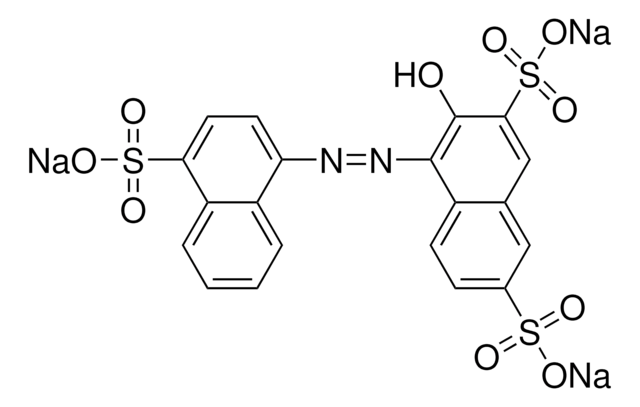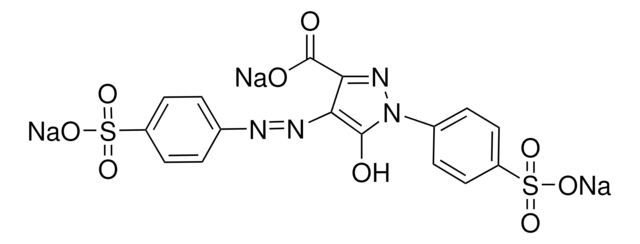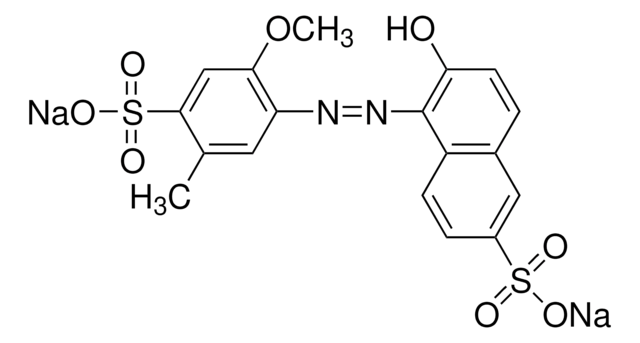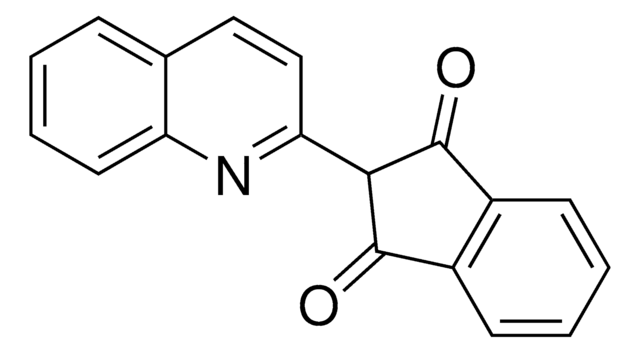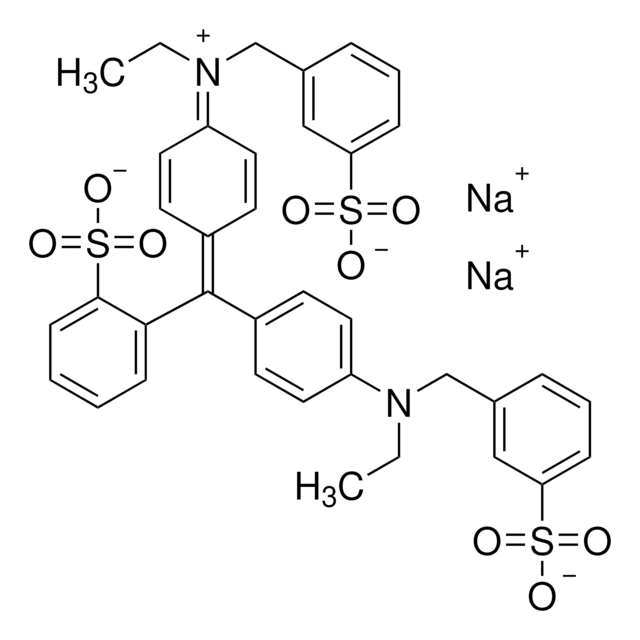A1016
Amaranth
Dye content 85-95 %, Powder
Synonym(s):
Acid Red 27, Azorubin S, FD & C Red Dye No. 2
About This Item
Recommended Products
product name
Amaranth, Dye content 85-95 %
form
powder
composition
Dye content, 85-95%
color
brown to red-brown
pH
9.65 (28 °C, - OECD Test Guideline 122 - alkaline)
mp
>350 °C (at 966.25 hPa)
solubility
H2O: 10 mg/mL
application(s)
diagnostic assay manufacturing
hematology
histology
storage temp.
room temp
SMILES string
[Na+].[Na+].[Na+].Oc1c(N=Nc2ccc(c3ccccc23)S([O-])(=O)=O)c4ccc(cc4cc1S([O-])(=O)=O)S([O-])(=O)=O
InChI
1S/C20H14N2O10S3.3Na/c23-20-18(35(30,31)32)10-11-9-12(33(24,25)26)5-6-13(11)19(20)22-21-16-7-8-17(34(27,28)29)15-4-2-1-3-14(15)16;;;/h1-10,23H,(H,24,25,26)(H,27,28,29)(H,30,31,32);;;/q;3*+1/p-3
InChI key
WLDHEUZGFKACJH-UHFFFAOYSA-K
Looking for similar products? Visit Product Comparison Guide
Related Categories
Application
Biochem/physiol Actions
Signal Word
Warning
Hazard Statements
Precautionary Statements
Hazard Classifications
Eye Irrit. 2
Storage Class Code
11 - Combustible Solids
WGK
WGK 3
Flash Point(F)
417.2 °F - closed cup
Flash Point(C)
214 °C - closed cup
Personal Protective Equipment
Certificates of Analysis (COA)
Search for Certificates of Analysis (COA) by entering the products Lot/Batch Number. Lot and Batch Numbers can be found on a product’s label following the words ‘Lot’ or ‘Batch’.
Already Own This Product?
Find documentation for the products that you have recently purchased in the Document Library.
Protocols
Separation of Tartrazine; Amaranth; Indigo carmine; New Coccine; Sunset Yellow FCF; Allura Red AC; Fast Green FCF; Erioglaucine disodium salt; Erythrosin B sodium salt; Phloxine B; Rose bengal
Our team of scientists has experience in all areas of research including Life Science, Material Science, Chemical Synthesis, Chromatography, Analytical and many others.
Contact Technical Service